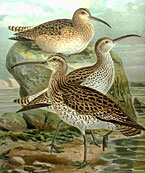History
The phrase "the media" began to be used in the 1920s, but referred to something that had its origins much further in the past.The invention of the printing press in the late 15th century gave rise to some of the first forms of mass communication, by enabling the publication of books and newspapers on a scale much larger than was previously possible.
The first high-circulation newspapers arose in the eastern United States in the early 1800s, and were made possible by the invention of high-speed rotary steam printing presses, and railroads which allowed large-scale distribution over wide geographical areas. The increase in circulation, however, led to a decline in feedback and interactivity from the readership, making newspapers a more one-way medium.
The telegraph separated communications from transportation, enabling messages to be transmitted instantaneously over large distances.
- Radio
- Television
- Internet, mobile devices, video games
Technologies
Electronic media and print media include:
- Broadcasting, in the narrow sense, for radio and television.
- Many instances of various types of recorded discs or tapes. In the 20th century, these were mainly used for music. Video and computer uses followed.
- Film, most often used for entertainment, but also for documentaries.
- The Internet -- examples include Blogs and podcasts (such as news, music, pre-recorded speech, and video)
- Mobile phones, which can be used for rapid breaking news and short clips of entertainment like jokes, horoscopes, alerts, games, music, and advertising
- Publishing, including electronic publishing
- Video games, which have developed into a mass form of media.




